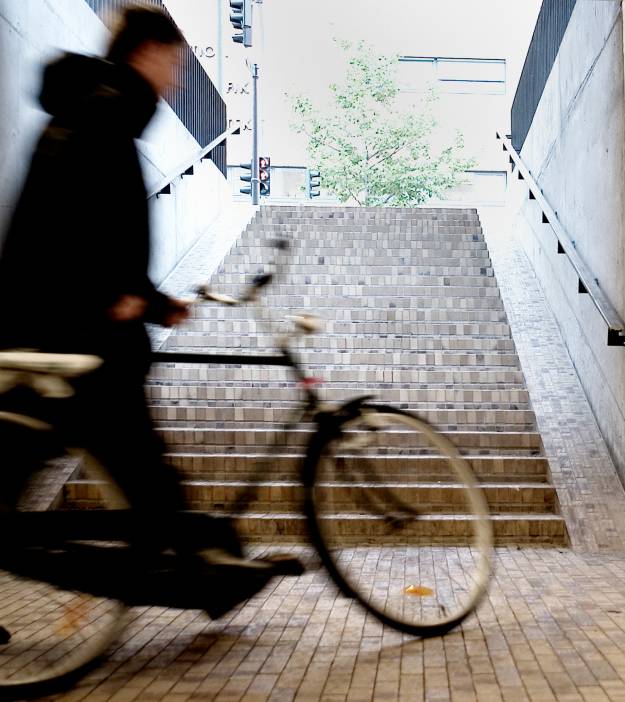February 2015 marked one year on from British Cycling’s launch of #ChooseCycling – a 10-point plan for how Britain could be transformed into a true cycling nation.
Launched at a reception in parliament by policy adviser, Chris Boardman, in front of government ministers, MPs and transport industry experts, the plan set out the steps that are needed to prioritise cycling as a transport option.
Over the last year British Cycling’s members have been telling us their top-3 priorities in #ChooseCycling with 23% supporting ‘cycle-proofing’, 19% supporting ‘investment’ and 18% supporting ‘leadership’.
One year on, a lot of progress has been made in achieving the #ChooseCycling vision.
Cycle-proofing: accommodating cycling in everything we do
The Department for Transport’s Cycle-proofing Working Group has made progress on reviewing guidance for traffic signs and best practice. The Department for Transport’s traffic signs, road markings and signals are set to be updated with the inclusion of many cycle-friendly features such as parallel pedestrian and cycle crossings, cycle only traffic lights and ultra-low speed roads where cycling has priority.
We are still waiting for a commitment to update the national design standards in England. Despite the Welsh Assembly, Transport for London and numerous city councils developing their own guidance, the government has not yet taken leadership on this important issue.
Big strides have been taken to update the ‘Design Manual for Roads and Bridges’ which is the design guidance responsible for creating our major roads.
Meaningful and consistent levels of investment for infrastructure
Investment in cycling infrastructure has increased over the course of the current government. Investment in eight ‘cycling cities’ along with local contributions means they have met the minimum £10 per head investment recommended. However, this funding is only in place until 2016.
Elsewhere the investment strategy is disappointing with the Local Sustainable Transport Fund due to finish in 2015.
The new funding programme - the Local Growth Fund, which is channelled through new local bodies called ‘Local Economic Partnerships’ contains no dedicated funding for cycling. All this means that funding for cycling infrastructure is set to drop to zero from 2016 whereas funding for roads (£24bn) and rail (HS2 £50bn alone) is guaranteed until at least 2021.
The Highways Agency has adopted the concept of cycling with enthusiasm and now has a £100 million fund to upgrade the network over the next five years.
Consistent political leadership for cycling
In February 2015 the government came up with an astonishing amendment to the Infrastructure Act to ensure that investment in cycling and walking is given the same level of strategic planning as investment in roads and rail.
British Cycling was part of a broad coalition of active travel and public health organisations pushing for the amendment.
Improving the justice system to protect vulnerable road users
British Cycling has called for a complete review of the justice system and how it responds to collisions on the road. British Cycling supports the Road Justice Campaign run by the CTC.
Any progress in the area of justice is slow but steps have been taken to improve how the system responds to people injured or killed while cycling. The government has confirmed that it will conduct a review of sentencing guidelines for dangerous driving offences.
Adding cycling safety to driving test
British Cycling has called for cycle safety to be a mandatory part of the driving test. The updated Hazard Perception Test contains additional cycle safety clips meaning that new drivers will be exposed to common situations found on the road.
The AA and BSM now ensure that all tutors go through training about driving near people on bikes.
Strengthen cycling safety provisions in the Highway Code
There needs to be a much greater emphasis on cycle safety with a clear need to strengthen overtaking standards and to remove unhelpful advice. The government has shown little appetite to update the Highway Code but - given upcoming changes to traffic signs - there is an even greater need for an update.
Road and cycle safety awareness
We are still waiting for the first national awareness campaign focusing on cycling. However, the government did back an awareness campaign in five major cities outside London. It took the form of a poster campaign which used images developed by Transport for London.
Reducing the risk of HGVs
Significant progress has been made over the last year with HGV safety high on the agenda. British Cycling will continue to call for cycle safety to be a mandatory part of driver training and to close the loopholes which allows dangerous vehicles on the street without basic safety equipment.
Chris Boardman joined the Mayor of London, Boris Johnson, in Brussels to press for changes to the European Directive governing the design HGVs. The vote was successful which means that in the future all vehicles will be designed to ensure the driver sits lower in the cab giving them a better view of the road.
In London, the Mayor of London has introduced a Safer Lorry Zone which means all HGVs entering greater London must have appropriate mirrors which allow the driver a view of the road around the cab and sideguards which in the event of a collision push people away from the wheels.
Cycle training made available to all children
Only around half of all children are given the opportunity to take part in cycle training at school. Despite this the government has shown little appetite to make cycle training part of the national curriculum.
Funding for Bikeability is only in place until 2016. This needs to be guaranteed into the future and extended to cover all schools.
Reducing speed limits saves lives of all road users
British Cycling is calling for 20mph to be the default speed limit in residential and urban areas. While this has not yet happened, 12 million people now live in areas committed to implementing 20mph.
The government has helped make this happen by making it easier for local authorities to make the case for 20mph by updating its guidance. Unfortunately, the cost of implementation is holding many back.













